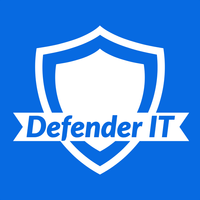Repeated Boot Environment Verifications (subsequent reboots)
-
After I perform an upgrade to each pfSense Plus 24.03 build, I typically test everything out, clear the logs, previous boot environment, and perform a manual reboot. I have noticed on the last few builds that I get the verification prompt on the next reboot although I have already verified it after the first reboot. It defaults to "0" seconds and doesn't actually do anything, but I thought it might be worth mentioning. Perhaps it's because I am still within the initial boot verification's defined threshold?
This is still present with today's build on my 6100 MAX.

-
@DefenderLLC Same experience for me too
Edit: Oh, the Traffic Graphs widget on the Dashboard clears its settings after clicking Verify and the page refreshes. I have to re-select the interface in Traffic Graphs and Save. This only occurs after an upgrade + click Verify as shown above.
-
 D DefenderLLC referenced this topic on
D DefenderLLC referenced this topic on
-
@DefenderLLC said in Repeated Boot Environment Verifications (subsequent reboots):
After I perform an upgrade to each pfSense Plus 24.03 build, I typically test everything out, clear the logs, previous boot environment, and perform a manual reboot. I have noticed on the last few builds that I get the verification prompt on the next reboot although I have already verified it after the first reboot. It defaults to "0" seconds and doesn't actually do anything, but I thought it might be worth mentioning. Perhaps it's because I am still within the initial boot verification's defined threshold?
This is still present with today's build on my 6100 MAX.

I believe you're quick to login to the GUI before startup actually completes. Does it eventually go away on it's own after refreshing?
I'm looking into it. Lots of new code involved here.
-
@cmcdonald said in Repeated Boot Environment Verifications (subsequent reboots):
@DefenderLLC said in Repeated Boot Environment Verifications (subsequent reboots):
After I perform an upgrade to each pfSense Plus 24.03 build, I typically test everything out, clear the logs, previous boot environment, and perform a manual reboot. I have noticed on the last few builds that I get the verification prompt on the next reboot although I have already verified it after the first reboot. It defaults to "0" seconds and doesn't actually do anything, but I thought it might be worth mentioning. Perhaps it's because I am still within the initial boot verification's defined threshold?
This is still present with today's build on my 6100 MAX.

I believe you're quick to login to the GUI before startup actually completes. Does it eventually go away on it's own after refreshing?
I'm looking into it. Lots of new code involved here.
The 2nd reboot is pretty fast ( < 2 min) before I can login again. I have my boot verification set to 300 seconds, so the verification appears to come back if I'm still within the first 5 min no matter how many times I reboot. I'll test this later on tonight and let 5 min go by before logging in again.
-
@DefenderLLC So the timer is actually started either once (for automatic verification) or twice (automatic + manual). If you login to the dashboard while startup is still underway, you will be seeing the output from the automatic timer (which happens to be hard set at 300 seconds). Then once startup is complete and manual is requested, the timer is restart with the user-specified timeout.
I just need to make sure it isn't visible during the automatic phase.
-
@cmcdonald One more thing, on any reboots past the post-install reboot and verification, the timer is at "0" seconds at logon like in the screenshot up above. It eventually goes away - plus in my case, the previous boot environment has already been deleted manually at that point, so there would be nothing else to boot into anyway. Just seems like an erroneous warning with no action behind it.
Thanks!.
-
FYI, it's still there even with this afternoon's build; however, if the initial timeout has exceeded, then it does not show up after the next logon. It's not something that 99% of people will ever see as I'm sure most don't perform another post-install reboot anyway.